Exposition du 21 mars au 10 mai 2014
Shimabuku

City in the Sea Intrigué par la découverte des Kuchiko, ovaires de concombre de mer séchés, Shimabuku décide de se rendre à Noto au Japon afin d'observer la fabrication de ce mets raffiné. Dans le cadre de ce séjour, il rencontre les femmes qui découpent pendant de longues heures les concombres de mer et les hommes qui déposent ensuite les fils de couleur orange clair pour les faire sécher sur des cadres en bois. Créer des Kuchiko est vécu comme une bataille contre les forces de la nature ! À l'occasion de City in the Sea, une vidéo et une sculpture documentant la confection des Kuchiko seront exposés, lors du finissage une dégustation de ce mets délicat sera aussi organisé leur permettant ainsi de poursuivre leurs voyages. Les oeuvres de Shimabuku sont issues de rencontres particulières entre les éléments, les personnes. Né en 1969 à Kobé, deuxième port du Japon, Shimabuku porte une attention toute particulière à la mer, son nom de famille est d'ailleurs constitué de deux idéogrammes chinois dont la première partie signifie île. City in the Sea existe également sous forme de diaporama évoquant une forme de vie aquatique. Une ville venue du passé, mystérieusement engloutie dont l'architecture serait formée de cristaux de sel. Cette composition a impressionné Shimabuku par sa régularité et sa similarité avec nos pyramides, au point qu'il est devenu évident que cette forme naturelle si harmonieuse a influencé l'architecture de nos ancêtres. City in the Sea fait appel au temps du souvenir et notamment via Children playing in the Sea, un film tourné avec une caméra super 8 dans lequel des enfants de Noto jouent à provoquer la mer, défient les vagues et s'approchent d'elle afin de jeter quelques pierres dedans. Ces moments émouvants nous transportent dans nos souvenirs lointains où la mer pleine d'insouciance pouvait être vécue comme un rêve. Une dimension onirique parcourt l'exposition et notamment par l'intermédiaire des Stones with Code trouvés sur les plages de Noto, transformant de simples plombs pour la pêche en fétiches contenant secrètement toutes les prières des pêcheurs ou encore Fish Spin-drying Device, astucieux système de séchage pour poissons, fabriqué à partir de roues de bicyclettes qui n'est d'ailleurs pas sans rappeler celle trônant dans l'atelier de Marcel Duchamp avant même son apparition au sein de l'histoire de l'art. City in the Sea nous incite à prendre le temps de regarder ce qui nous entoure et particulièrement avec Sea and Flowers imaginée suite à l'observation d'une fleur rouge flottant dans les vagues, non loin de la côte de Noto. Shimabuku s'interroge alors sur l'origine et le trajet de cette fleur et décide d'illustrer cette traversée en offrant lui aussi des pétales à la mer, se demandant toutefois s’ils parviendront un jour quelque part. Un voyage dont l'arrivée n'a finalement que peu d'importance. ← Back
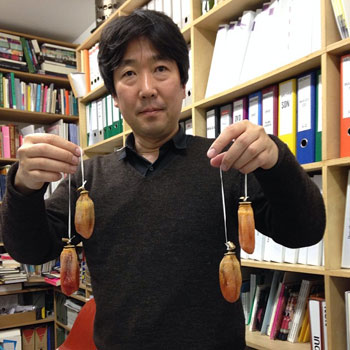
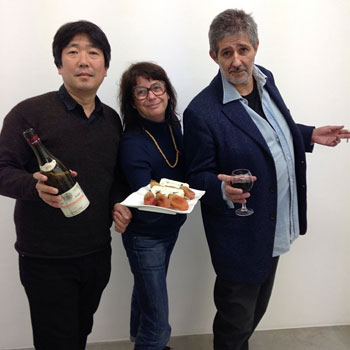
Dégustation de kakis séchés par Shimabuku avec du roquefort.

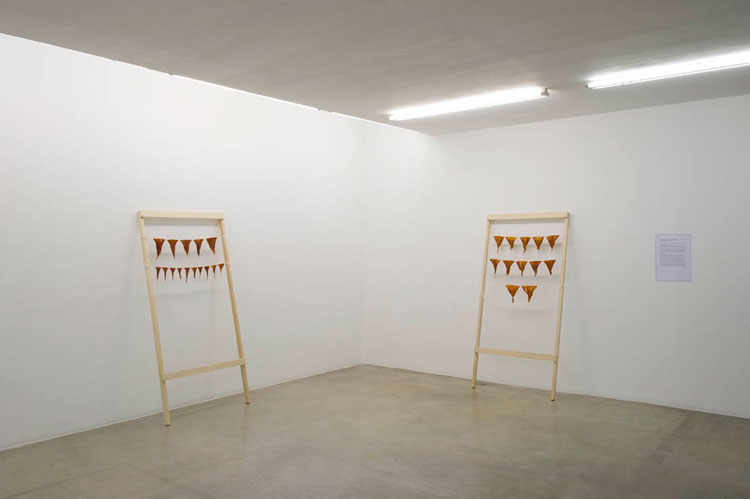
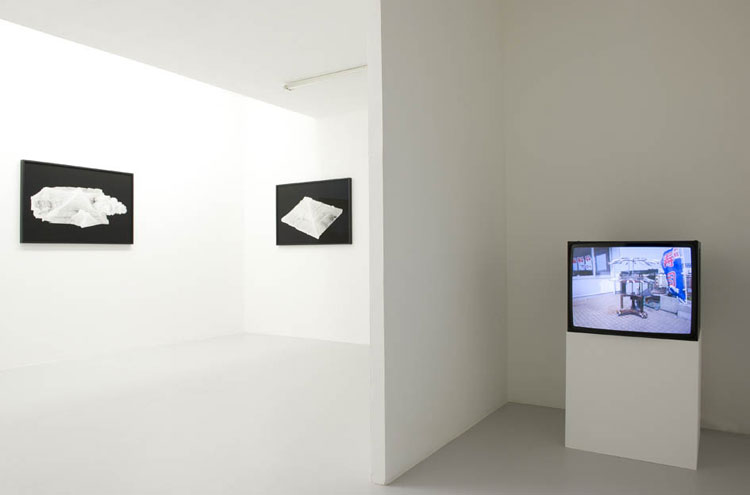
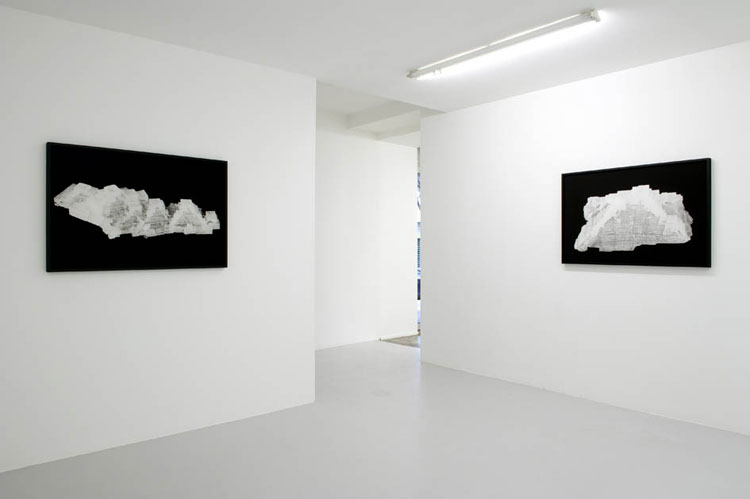
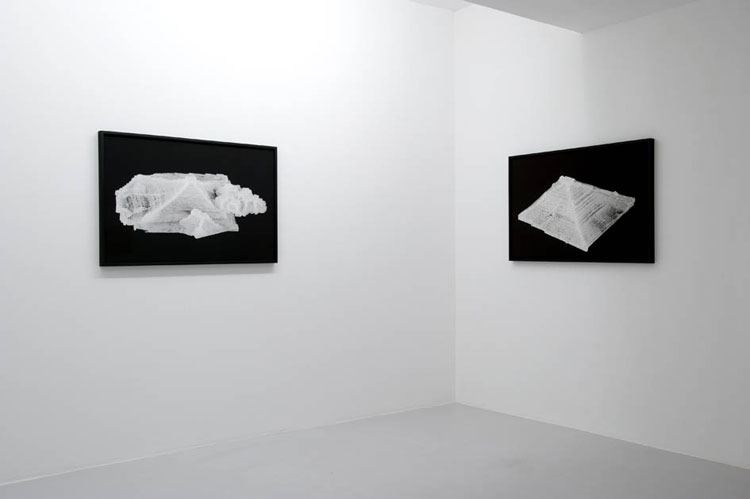

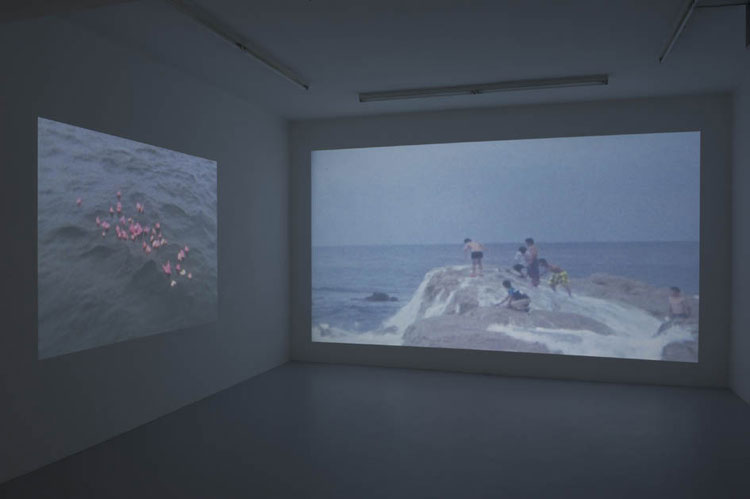

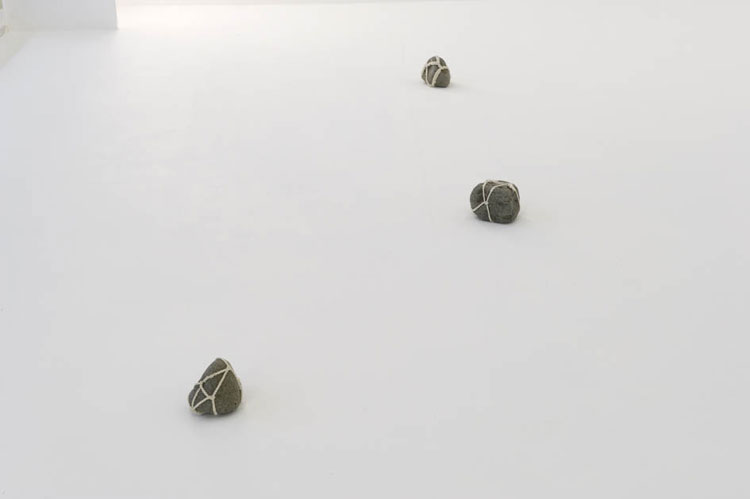
Shimabuku
Vues de l'exposition City in the Sea
Courtesy Air de Paris
Air de Paris, 2014
Exhibition from March 21 to May 10, 2014
Shimabuku

City in the Sea Intrigued by his discovery of kuchiko, dried sea cucumber ovaries, Shimabuku decided on a trip to Noto, Japan to see the delicacy being made. During his stay there he met women who work for hours cutting up sea cucumbers and men placing the light orange strips on wooden frames to dry. Making kuchiko is seen as a battle against the forces of nature. As part of City in the Sea a video and a sculpture showing the preparation process will be on show, and at the close of the exhibition a farewell tasting will be organised before the works continue on their way. Shimabuku's oeuvre hinges on specific encounters between people and the elements. Born in 1969 in Kobe, Japan's second-largest port, he is particularly interested in the sea: as it happens, the first of the two Chinese characters making up his family name means 'island'. City in the Sea also exists as a slide projection portraying a form of marine life suggesting a mysteriously engulfed city whose buildings are made of salt crystals. The artist was so struck by the regularity of their arrangement and their resemblance to the Pyramids that it became evident to him that this harmonious work of nature had influenced the architecture of our ancestors. City in the Sea works with memory, notably in the Super-8 film Children Playing in the Sea, in which the children of Noto are seen challenging the sea by defying the waves and throwing stones: moving moments that take us back to those distant, carefree times when the sea seemed like a dream. This dreamlike feeling pervades the exhibition, notably in Stones with Code, which transmutes simple fishing sinkers found on the Noto beaches into secret, magical bearers of fishermen's prayers; and Fish Spin-drying Device, an astute implement for doing exactly what its name says, made out of bicycle wheels that remind us of the one that stood in state in Marcel Duchamp's studio well before it entered the history of art. City in the Sea urges us to take the time to look at the world around us, especially with the work Sea and Flowers, inspired by the observation of a red flower floating among the waves just off the coast of Noto. Here we find Shimabuku wondering about where the flower came from, and how it got there, and deciding to illustrate its voyage by offering the sea petals without knowing if, someday, they will make a landfall somewhere. As we are well aware, though, it is not really the arrival that counts. ← Back


Tasting Persimon dried by Shimabuku with blue cheese.









Shimabuku
Vues de l'exposition City in the Sea
Courtesy Air de Paris
Air de Paris, 2014